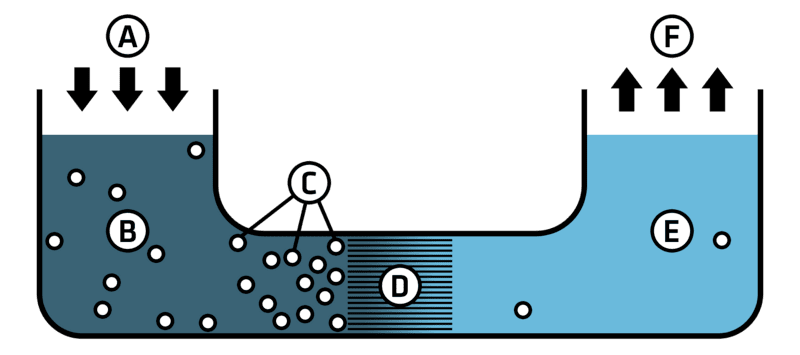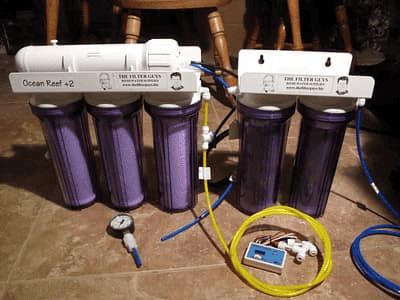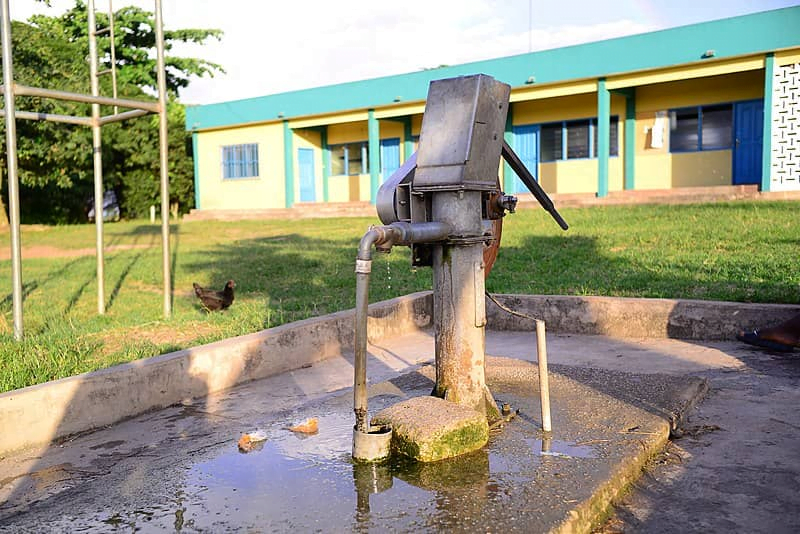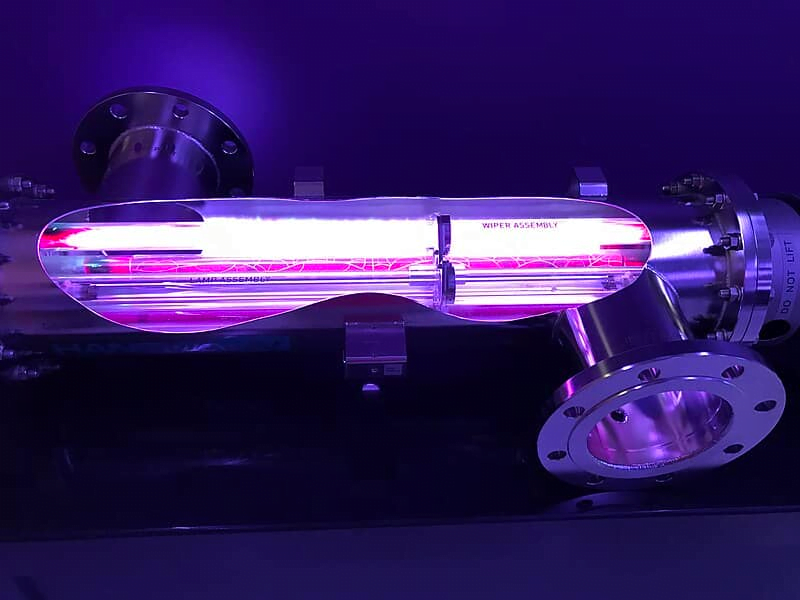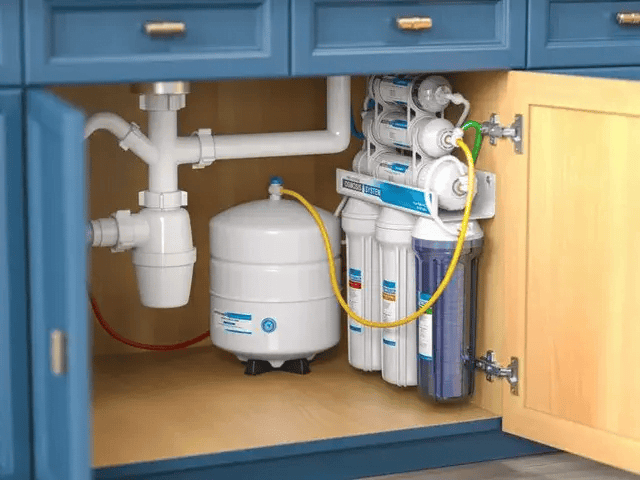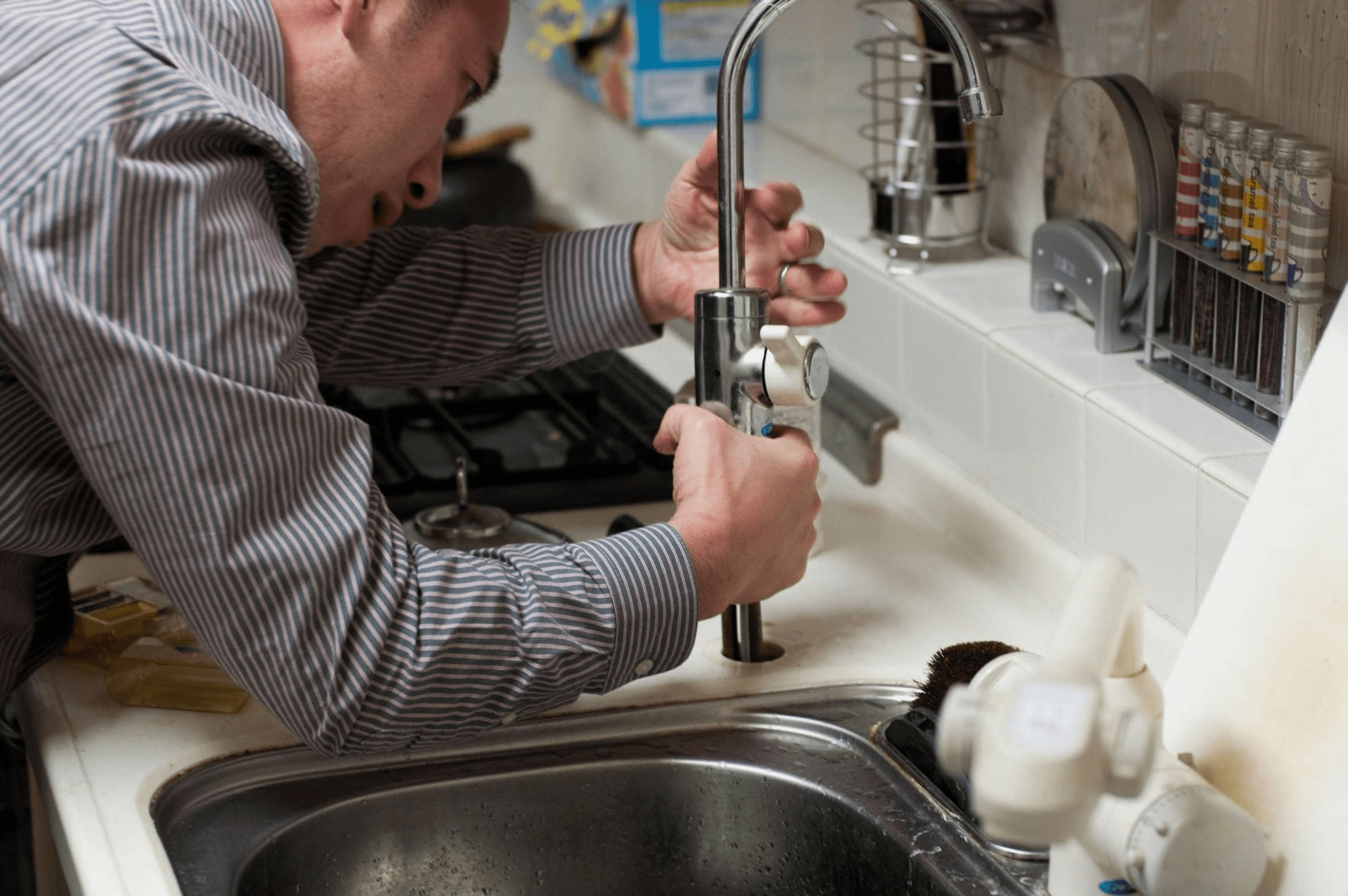Whole House Reverse Osmosis Systems: The Ultimate Guide
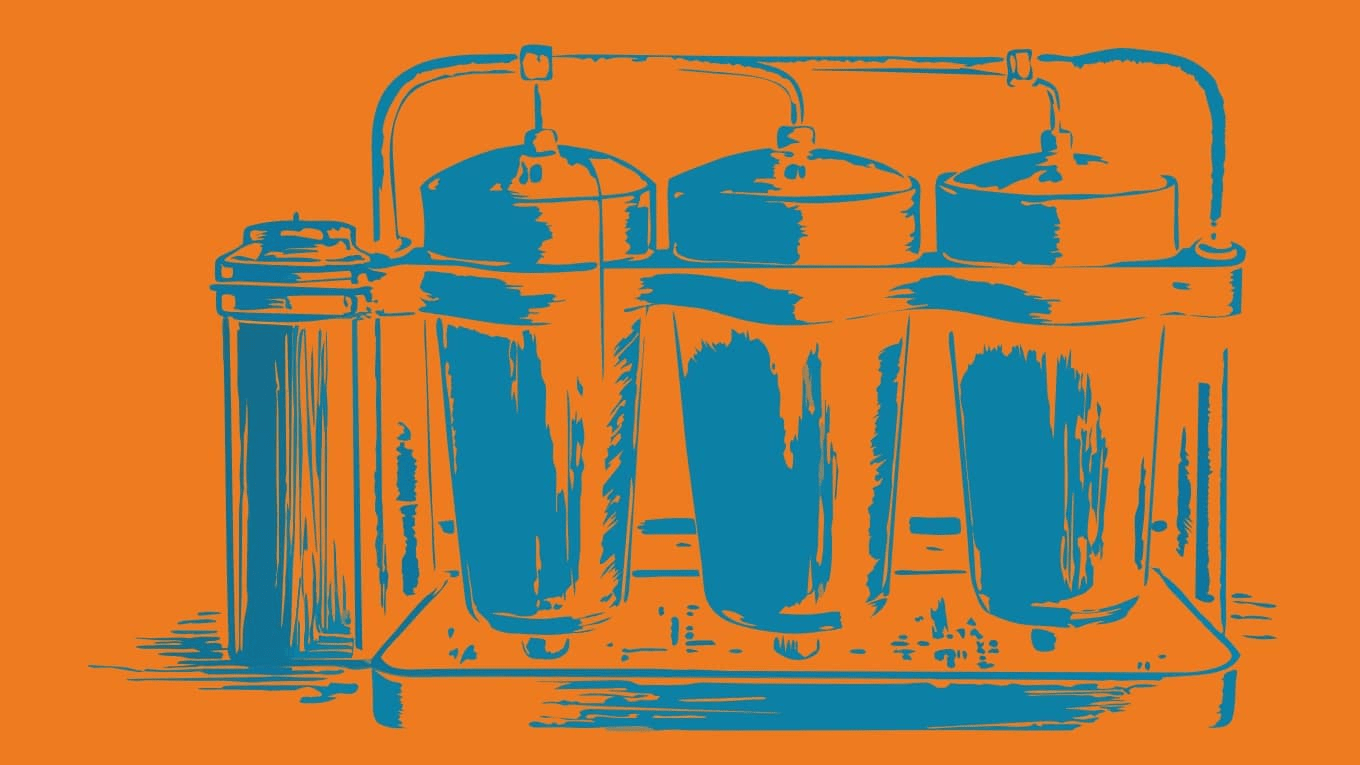
What is Reverse Osmosis?
Contaminants are removed from water through the reverse osmosis process by passing the water through a membrane that allows only specific molecules to penetrate. The membrane acts as a barrier, only allowing water molecules to pass through while blocking larger molecules such as dissolved salts, minerals, and other impurities. The result is clean, purified water free from contaminants and safe for consumption.
How Does Reverse Osmosis Work?
A – Pressure
B – High concentration solution
C – Flow build up
D – RO Membrane
E – Low concentration solution
F – Filtered water
The reverse osmosis process works on the principle of osmosis, where water naturally moves from an area of lower solute concentration to an area of higher solute concentration through a semipermeable membrane. In reverse osmosis, pressure is applied to the side of the membrane with higher solute concentration, forcing water molecules to move in the opposite direction, from the concentrated solution to the dilute solution.
Whole house reverse osmosis water filter systems generally consist of multiple stages of a filtration system, each designed to target specific types of contaminants. These stages may include pre-filters to remove sediment and larger particles, activated carbon filters to adsorb organic compounds and chlorine, and the semipermeable membrane for removing dissolved solids and other impurities. Proper pre-treatment is essential for maintaining the longevity and effectiveness of the system, ensuring it lasts 15-20 years.
Benefits of Whole House Systems
Improved Water Taste and Odor
One of the most noticeable benefits of using a whole-house reverse osmosis system is the significant improvement in the taste and smell of the water, resulting in great tasting drinking water. By removing chlorine, sediment, and other impurities, RO systems produce water that is clean and refreshing.
Removal of Contaminants
Whole house reverse osmosis systems are very effective at removing a wide range of contaminants from water, including heavy metals, fluoride, arsenic, nitrates, and pharmaceutical residues. This ensures that households have access to clean, safe water for drinking, cooking, and bathing.
Health Benefits
Consuming purified water free from contaminants can have significant health benefits for individuals and families. By eliminating harmful substances from the water supply, RO systems help reduce the risk of waterborne illnesses and improve overall health and well-being.
Softer Skin and Hair
The removal of chlorine and other chemicals from water can also have cosmetic benefits, such as softer skin and hair. Without the harsh effects of chlorine, people may experience less dryness, irritation, and damage to their skin and hair.
Considerations Before Installation
Water Quality Testing
The primary consideration when considering a whole-house reverse osmosis system is the assessment of the water supply’s quality. Performing extensive water quality testing can help identify the exact contaminants present in the water and determine the level of filtration required. This often includes measuring total dissolved solids (TDS) levels.
System Size and Capacity
Whole house reverse osmosis systems come in various sizes and capacities to accommodate different household requirements. It’s essential to choose a system that can handle the water demand of your household while providing efficient filtration and water flow.
Water Pressure and Flow Rate
Reverse osmosis systems require adequate water pressure to operate effectively. Before installation, homeowners should assess their water pressure and flow rate to ensure compatibility with the chosen RO system. In some cases, additional equipment such as booster pumps may be necessary.
Space Requirements
Whole-house reverse osmosis systems normally require dedicated space for installation, including storage tanks, filtration units, and plumbing connections. Additionally, space is needed for an atmospheric water storage tank, which is a key component of the system. Homeowners should consider the available space in their homes and decide whether installing an RO system is feasible and select a system that fits their available space.
Maintenance Requirements
Like any water treatment system, whole-house reverse osmosis systems require regular maintenance to guarantee the best performance and longevity. Homeowners should get used to maintenance tasks involved, such as filter replacements, membrane cleaning, and system sanitization, and factor these into their decision-making process.
Water Usage Patterns
Your household’s water usage behavior is vital for selecting the right whole-house reverse osmosis system in terms of size and capacity. Factors such as the number of occupants, daily water consumption, and usage habits (e.g., bathing, cooking, laundry) can influence the system’s design and performance requirements.
Budget Considerations
Whole-house reverse osmosis systems range in price depending on considerations like brand, capacity, and features. Homeowners should establish a budget for their RO system investment, considering the initial purchase cost and the ongoing maintenance and operating costs. However, it’s important to consider that whole house RO systems can be expensive to install and maintain, and may require additional equipment and space.
Using Reverse Osmosis for Borehole/Underground Water
While municipal water supplies are subject to strict regulations and treatment processes, many homeowners rely on private water sources such as boreholes or underground wells. These water sources often pose unique challenges due to their higher mineral content, bacterial contamination, or other impurities.
Water Quality Testing
Conduct thorough water quality testing to identify the specific contaminants present in the borehole or underground water supply. This will help determine the level of filtration required and ensure that the chosen RO system is capable of effectively treating the water.
Pre-Filtration
Depending on the quality of the water source, it may be necessary to implement additional pre-filtration stages to remove sediment, debris, and larger particles before the water enters the reverse osmosis membrane. This helps prevent clogging and extends the lifespan of the RO system.
Mineralization
Reverse osmosis removes not only contaminants but also minerals essential for human health, such as calcium and magnesium. To address this, some RO systems feature mineralization stages that reintroduce beneficial minerals into the purified water, improving its taste and nutritional value.
UV Sterilization
In cases where borehole or underground water is prone to bacterial contamination, UV sterilization may be incorporated into the reverse osmosis water system to disinfect the water and ensure its safety for consumption. UV sterilization effectively neutralizes bacteria, viruses, and other microorganisms without the use of chemicals.
Professional Installation
Given the complexity of treating boreholes or underground water, homeowners may opt for professional installation of their whole house reverse osmosis system. Professional installers can assess the water quality, recommend appropriate filtration solutions, and ensure proper installation and setup of the RO system.
Benefits of Whole House Systems
Improved Water Taste and Odor
One of the most noticeable benefits of using a whole-house reverse osmosis system is the significant improvement in the taste and smell of the water. By removing chlorine, sediment, and other impurities, RO systems produce water that is clean and refreshing.
Removal of Contaminants
Whole-house reverse osmosis systems are very effective at removing a wide range of contaminants from water, including heavy metals, fluoride, arsenic, nitrates, and pharmaceutical residues. This ensures that households have access to clean, safe water for drinking, cooking, and bathing.
Health Benefits
Consuming purified water free from contaminants can have significant health benefits for individuals and families. By eliminating harmful substances from the water supply, RO systems help reduce the risk of waterborne illnesses and improve overall health and well-being.
Softer Skin and Hair
The removal of chlorine and other chemicals from water can also have cosmetic benefits, such as softer skin and hair. Without the harsh effects of chlorine, people may experience less dryness, irritation, and damage to their skin and hair.
Installation Process
Installing a whole-house reverse osmosis system requires careful planning and attention to detail to ensure proper operation and the best performance. While the specific installation process may vary depending on the system and the layout of your home, and not to mention having a plumber handle the installation, here is a general overview of the steps involved:
Selecting the Installation Location
Choose a suitable location for installing the RO system, preferably near the main water supply line and with adequate space for the system components. Ensure the area is well-ventilated and easily accessible for maintenance purposes.
Shutting Off the Water Supply
Before beginning the installation, shut off the main water supply to your home to prevent water flow during the installation process. This can typically be done by turning off the main shut-off valve located near the water meter.
Mounting the System
Install mounting brackets or a support frame to secure the RO system in place. Ensure the system is level and stable to prevent leaks or damage during operation.
Connecting the Water Supply
Connect the incoming water supply line to the inlet port of the RO system using the appropriate fittings and tubing. Ensure all connections are tight and secure to prevent leaks.
Installing Pre-Filters
If your RO system includes pre-filters, install them according to the manufacturer’s instructions. Pre-filters are typically installed before the RO membrane and are designed to remove sediment, chlorine, and other larger particles from the water.
Installing the RO Membrane
Install the RO membrane module according to the manufacturer’s instructions, ensuring proper alignment and sealing. The membrane module is the heart of the RO system and is responsible for removing dissolved solids and contaminants from the water.
Connecting the Drain Line
Connect the drain line from the RO system to a suitable drainage point, such as a sink drain or a dedicated drain line. Ensure the drain line is properly secured and positioned to allow for efficient drainage of wastewater.
Installing Post-Filters
If your RO system includes post-filters, install them after the RO membrane to further enhance water quality. Post-filters are designed to remove any remaining impurities and improve the taste and clarity of the purified water.
Connecting the Storage Tank
If your RO system includes a storage tank, connect it to the system using the provided tubing and fittings. Ensure the tank is properly pressurized and vented to allow for efficient water storage and distribution.
Testing and Flushing
Once the installation is complete, turn on the main water supply and check for any leaks or abnormalities in the system. Flush the RO system for the recommended period to remove any residual contaminants and ensure the water is clean and safe for consumption.
Final Checks and Adjustments
Perform final checks on the system to ensure everything is functioning correctly. Check water pressure, flow rate, and quality to verify that the RO system is operating as expected. Make any necessary adjustments or corrections to address any issues that may arise.
By following these steps and carefully following the manufacturer’s instructions, you can ensure a successful installation of your whole house reverse osmosis system and enjoy clean, purified water throughout your home.
Maintenance Tips
Maintaining your whole house’s reverse osmosis system is essential to ensure its continued effectiveness and longevity. Regular maintenance helps prevent issues such as clogging, contamination, and system malfunction, allowing you to enjoy clean, purified water for years to come. Here are some important maintenance tips to keep in mind:
Replace Filters Regularly
The filters in your RO system play a critical role in removing contaminants from the water supply. Over time, these filters can become clogged with sediment, debris, and other impurities, reducing their effectiveness. It’s essential to replace the pre-filters, post-filters, and RO membranes according to the manufacturer’s recommended schedule to maintain optimal filtration performance. Regular filter replacements ensure that your whole-house reverse osmosis system continues to provide clean, purified water throughout your home. Neglecting this maintenance can lead to decreased water quality, lower system efficiency, and potential damage to the RO system itself.
Sanitize the System
Periodic sanitization of the RO system is crucial to prevent bacterial growth and contamination. Follow the manufacturer’s guidelines for sanitizing the system, which typically involves using a sanitizing solution and flushing it through the system. This helps maintain the cleanliness and safety of the purified water.
Monitor Water Quality
Regularly test the water quality to ensure the RO system is performing as expected. Monitoring parameters such as total dissolved solids (TDS), chlorine levels, and pH can help identify any issues with the system and allow for timely corrective actions.
Check for Leaks
Inspect the system regularly for any signs of leaks or drips. Even minor leaks can lead to water wastage and potential damage to the system or surrounding areas. Address any leaks promptly to maintain the system’s integrity and efficiency.
Maintain Proper Water Pressure
Ensure that the water pressure entering the RO system is within the recommended range specified by the manufacturer. Low or high water pressure can affect the system’s performance and longevity. If necessary, install a pressure regulator or booster pump to maintain optimal water pressure.
Environmental Impact
Water Conservation
While reverse osmosis does generate wastewater as part of the filtration process, many systems are equipped with permeate pumps or other technologies to maximize water recovery and minimize waste. These features make whole-house reverse osmosis systems an environmentally friendly option for water treatment.
Sustainable Water Management
By investing in a whole-house reverse osmosis system, homeowners can take control of their water supply and reduce reliance on municipal water sources. This promotes sustainable water management practices, conserving natural resources and reducing the strain on public water infrastructure.
Protection of Natural Ecosystems
Using a whole-house reverse osmosis system helps protect natural ecosystems by reducing the discharge of contaminants into rivers, lakes, and other water bodies. By removing pollutants from the water supply, RO systems help maintain water quality and ecosystem health, benefiting aquatic plants and animals.
Long-Term Sustainability
Whole-house reverse osmosis systems are designed to provide long-term solutions for improving water quality and sustainability. With proper maintenance and care, RO systems can last for many years, providing clean, purified water for households while minimizing environmental impact.
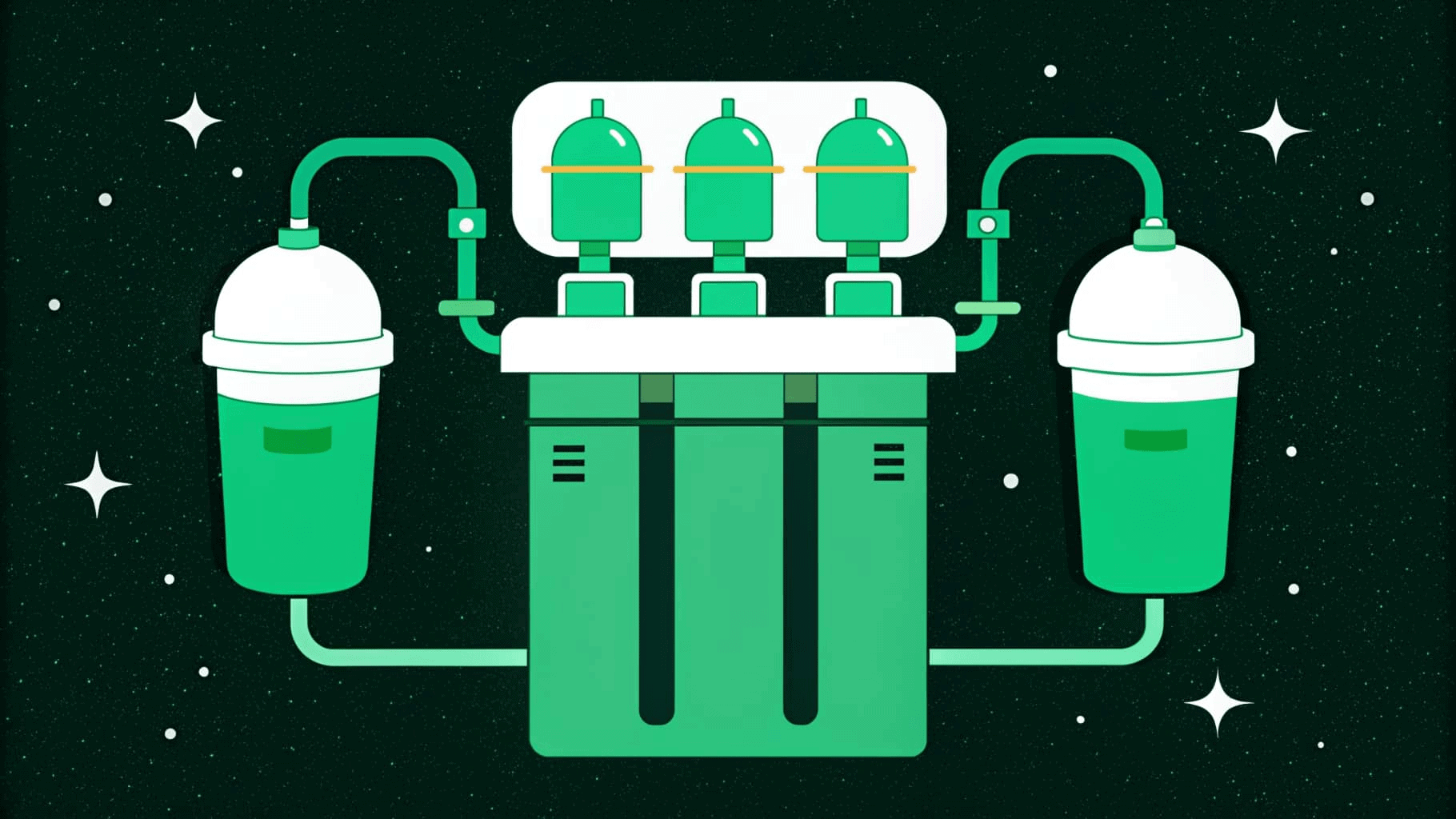
In conclusion, whole-house reverse osmosis systems offer an effective and comprehensive solution for improving water quality, enhancing health and well-being, and reducing environmental impact. From their ability to remove contaminants and improve taste to their energy-efficient operation and long-term sustainability, RO systems provide numerous benefits for households seeking clean, purified water throughout their homes.
By understanding the principles of reverse osmosis, considering key factors before installation, and implementing proper maintenance practices, homeowners can enjoy the benefits of whole-house reverse osmosis systems for years to come. Whether you’re dealing with municipal water issues, relying on borehole, underground water sources, rainwater harvesting, or simply seeking a more sustainable water treatment solution, a whole-house reverse osmosis system can provide peace of mind and confidence in your water supply.
Investing in a whole-house reverse osmosis system is not just an investment in clean water—it’s an investment in the health and well-being of your family, the sustainability of your home, and the preservation of our planet’s precious water resources. With the right system in place, you can transform your home’s water quality and enjoy the benefits of pure, refreshing water every day.

